Over 10 years of experience in creative Ultrasonic solutions!
ULTRASONIC CLEANING
ProSonic industrial ultrasonic cleaners
ProSonic is importer for the Benelux of the Spanish brand UltraTecno and supplies standard single-stage ultrasonic cleaners from 100 - 4.500 liters water capacity, but also custom made models both single and multi-stage up to 12.000 liters. If desired, all ultrasonic cleaners be provided with a fully automated loading and unloading system.
One of our best sellers is the ACM-650E Ultrasonic Cleaner. This machine is ideal for industrial applications such as the plastics processing industry, engine overhaul workshops and more. Combined with the right chemicals, it is possible to de-lacquer metal parts. It is also possible to remove heavy contamination and scale and our ultrasonic cleaners are a perfect solution for this.
ProSonic ultrasonic cleaners are distinguished by:
- Using a low ultrasonic frequency of 28 khz is very effective for heavy soiling!
- Digitally generated sine wave, this makes synchronization possible, achieving even more powerful cavitation and a very high energy efficiency of 95%.
- By the above i.c.w. patented sound insulation (ARF), it is possible to keep the noise level of a closed ultrasonic cleaner below 78 dba.
- Very good thermal insulation 70mm. of high quality insulation material ensures low energy loss and a pleasant working environment.
- The ProSonic ultrasonic cleaner has std. a high wattage per liter, but this can also be determined customer-specifically.
- The transducers (tweeters) and controls are designed, built and tested by the manufacturer.
- All transducers are integrated into the walls of the ultrasonic cleaner and thus do not compromise the usable working space and are well protected from damage.
- Expected life of the transducers in daily use is 12 to 15 years and replacement of the std. 1,000 watt elements is easy.
- Exclusive and patented Laminar Flow System (LFS). All loose floating debris, such as oil and grease, as well as paint, is discharged in the auto-cycle so that the clean workpiece leaves the bath through a clean liquid surface.
- The ultrasonic cleaner is made entirely of stainless steel.
- Each ultrasonic cleaner can be equipped with a hybrid heater.
- Control by 7" touch screen i.c.m. a PLC with many features, e.g. automatic start-up of a cleaning cycle, but also keep track of the energy consumption of the ultrasonic cleaner per cycle.
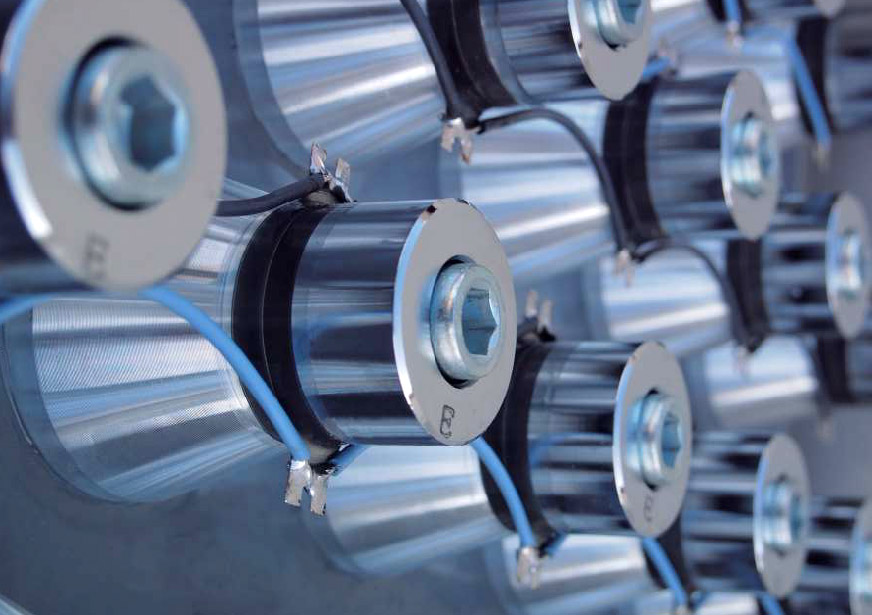
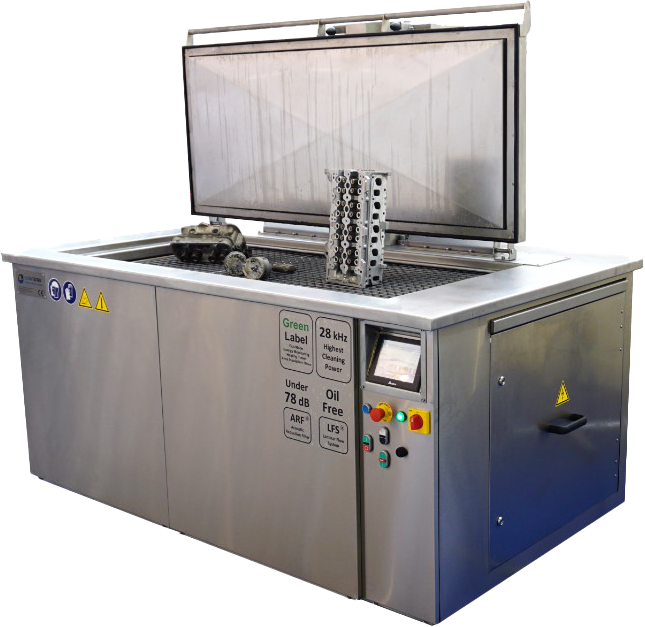
Technology behind Ultrasonic:
The vibration of high-frequency sound waves in water creates cavitation: millions of tiny bubbles form, implode and release energy.
The lower the frequency, the larger the bubbles grow before they implode and the greater the amount of energy released. Therefore, we use a frequency of 28 Khz for heavily contaminated objects because it is the most powerful.
We use the sound sine wave as the engine for our cleaning process and therefore it is important that all elements are synchronized. Through our patented 28Khz digital synchronized transducer sets and well-constructed machines, we can provide the most powerful ultrasonic cleaning machines.
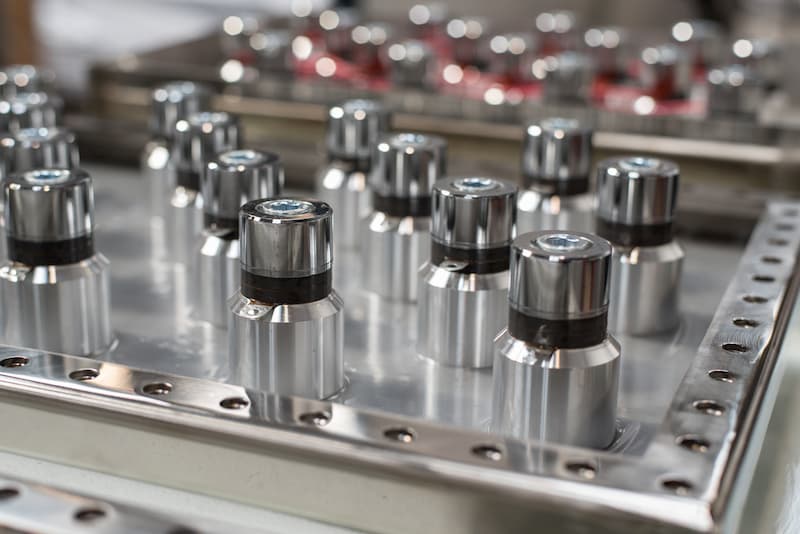
Cleaning with ultrasonic, how?
The tank of the ultrasonic cleaner is filled with water and 5 - 10% soap with high or low ph value, depending on the type of dirt, after which this is brought to a temperature of 40 to 80 deg.
The temperature has 2 functions in this process:
1. the loose and soft dirt is loosened and
2. it lowers the vapor pressure of the liquid so that cavitation becomes possible.
A very powerful sound wave is sent through this bath, in our case 28 kHz. This sine wave "pushes and pulls" wherever a hard surface is touched, this pulling motion (the changing of the sine wave) locally creates a negative pressure which results in small vacuum bubbles. These vacuum bubbles have a life span of half a cycle and "implode" as a result. This implosion force (cavitation) against the hard surface is the cleaning action of the ultrasonic cleaner.
The low frequency of 28 kHz. gives a longer build-up time of the vacuum bubble, which makes it larger than at higher frequencies and thus cleans better.
Higher frequencies up to, e.g., 400 kHz are used in ultrasonic cleaning of delicate parts and fine contamination such as optics, electronics and medical instruments.
From the above, ultrasonic cleaning is most effective in separating "hard" dirt from a hard surface. It is also called sandblasting without sand, however, at the correctly chosen powers and frequency, the surface is not affected or touched. This makes it very suitable, among other things, for cleaning delicate molds in the plastic injection molding industry.
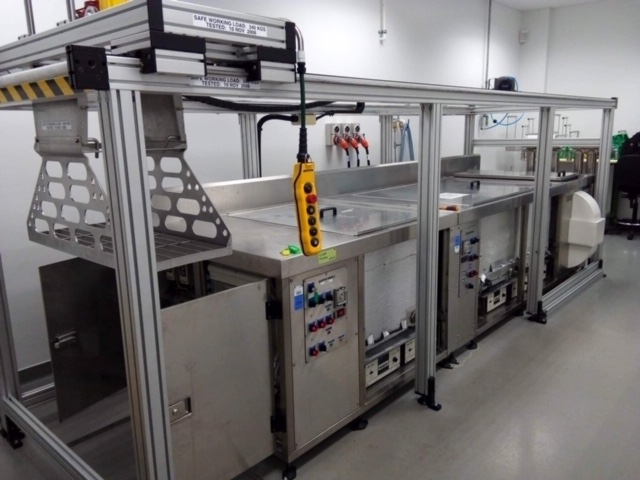
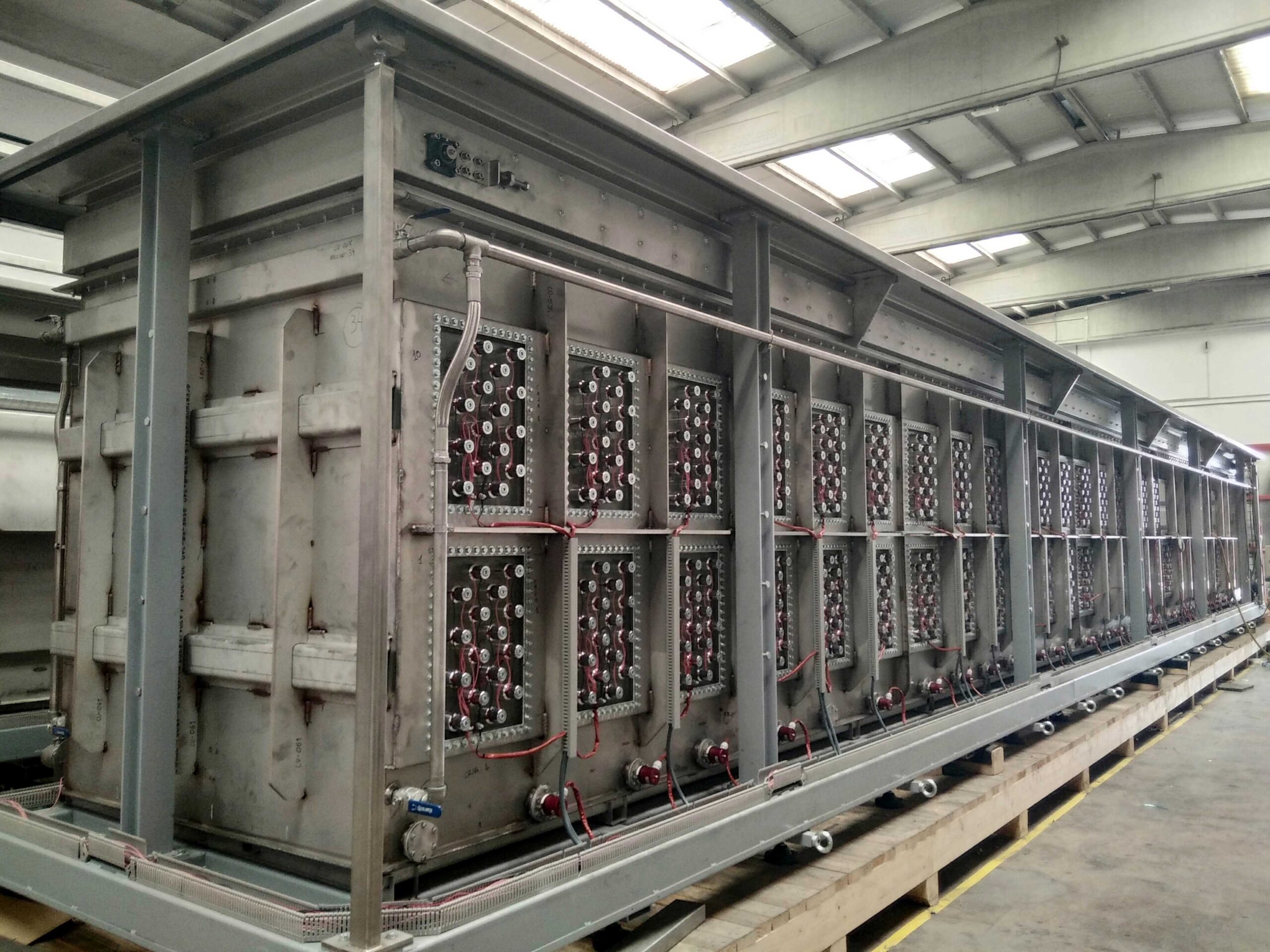
Skimming 100,000 cans per hour
DEFOAMING AND DEGASSING
Defoaming, Foam control, Degassing:
Our patented technology makes it possible to reduce foam in the bottle neck or cup area during filling and prevent foam overflow, without affecting the beverage itself.
The waves only penetrate the foam, while the total oxygen content of the package remains unaffected and the TPO stays within specifications.
The ultrasonic unit is easily and quickly integrated into all common filling systems. The system is also widely used in industrial processes, such as pharmaceuticals, chemicals, inks and detergents.
The system
Components
- Switch box with generator (place within 12 meters of transducer)
- Transducer and Emitter (places at on filling line)
Features
- Single phase alternating current, 100-240V, 12A
- Automatic operation with filling system
- SS AISI316, waterproof (IP67)
- Resistant to CIP cleaning chemicals
- Hygienic surface
- Low power consumption 80 watts
- Very low maintenance costs
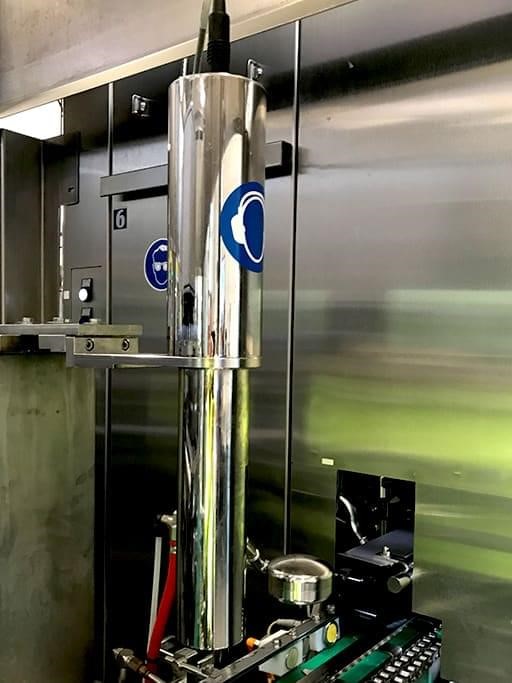
Case study filling lines
Beer filling line
- Filler: KHS
- Packaging: cans of 330 ml and 500 ml
- Position of defoamer: above the filling line between filler and capper
- Increase in filling speed by about 9% from 78,000 to 85,000 cans/h (330 ml) and 66,000 to 72,000 cans/h (500 ml)
- 0.6% reduction in extract loss with faster filling rate
- Reduction of failure due to underfilling by 27%.
- No contamination on collars, wire, labels and packaging
- Clear reduction on cleaning costs of the line
CSD filling line
- Filler: Krones
- Packaging: cans of 330 ml and 500 ml
- Position of defoamer: above the filling line between filler and capper
- Increase in filling speed from 81,000 to 90,000 cans/h (330 ml) and 60,000 to 72,000 cans/h (500 ml)
- 2.3 ml less product wastage per 330 ml can and 2.8 ml less product wastage per 500 ml can at a faster filling speed
- Elimination of contamination on can ends, labels and packaging
- Increased quality for the end customer
